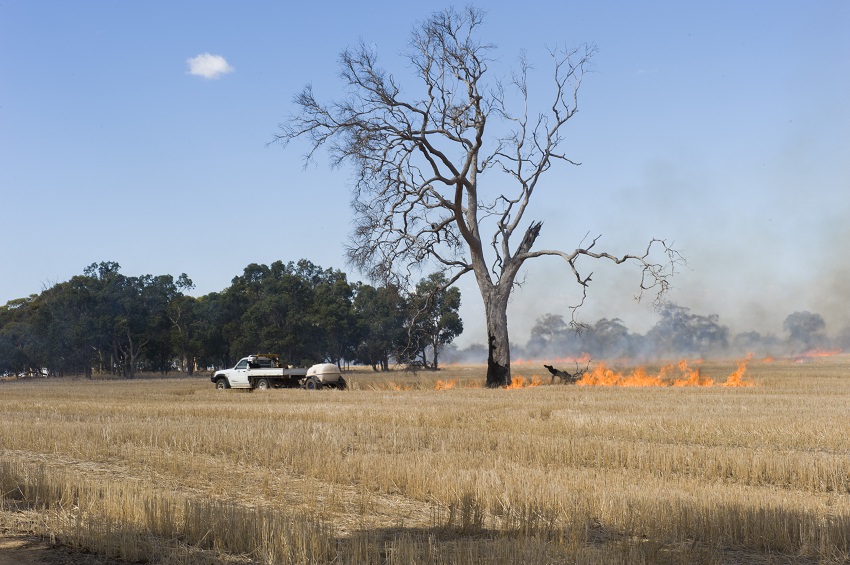
A series of recent fires have been a timely reminder for agricultural businesses across the State to prepare properties for an elevated risk of bushfires this season.
The Department of Primary Industries and Regional Development’s (DPIRD) Season 2021 webpages have new information and useful links to assist landholders to reduce the risk of fire damaging their assets.
The warning comes after the Department of Fire and Emergency Services (DFES) recently released its seasonal forecast, with an above average risk for Perth and large parts of the Midwest, Gascoyne, Pilbara, South West and Great Southern.
DPIRD’s ‘Fire on farms in Western Australia – Reducing the risks’ webpage harnesses advice on what could be damaged by fire, identifying fire hazards and what to do about them, reducing hazards and making farms fire safe.
Department incident and emergency management director Pam I’Anson said with an increased fuel load and predictions of above average daily temperatures for most of the State it was important for landholders to take immediate action to be prepared.
Ms I’Anson said it was imperative landholders develop a fire management program to reduce the risk of fire and document a Bushfire Plan.
“Rural landholders are no strangers to the risk of fire, which can start from a range of sources, including lightening strikes, spontaneous combustion of hay stacks, machinery and vehicles and fallen power lines,” she said.
“The risk is particularly high for properties with a history of wildfires, that have experienced hot dry conditions for extended periods combined with strong winds, sloping and dissected country and those with poor access.
“It is important to document preparedness plans and to involve all members of the household so everyone knows what to do in the unfortunate event of a fire and reduce the risk of harm.”
The ‘Fire on farms in Western Australia – Reducing the risks’ webpage also has a link to the DFES website where a free online Bushfire Plan template can be downloaded, which takes about 15 minutes to complete.
Ms I’Anson said the DPIRD webpage also included additional fire preparedness information tailored to rural landholders, such as how to make a property fire safe.
“Maintaining fuel free firebreaks is essential, including around boundaries and laneways, sheds, yards and storage areas, water supply infrastructure, fuel storage and powerlines,” she said.
“Reducing the fuel load around sensitive areas, like houses, sheds and yards, and having firefighting gear ready to go is also good practice.”
The webpages also detail measures to prevent vehicle and harvest fires, including stopping frequently to clean dust and stubble off hot engine components and always having a fire extinguisher on board.
There is also a link to the ‘Oats: hay production’ webpage, which has advice on how to prevent spontaneous combustion in hay sheds, caused by inadequate airflow.
Animal welfare for livestock, pets and companion animals is an important part of any Bushfire Plan.
Ms I’Anson said DPIRD’s webpages had a series of factsheets to assist animal owners and carers to prepare a Plan for Animal Welfare in Emergencies (PAWE).
“Livestock producers and pet and companion owners alike are encouraged to pause for PAWE and fill out the template on the factsheet,” she said.
“This covers when, how and where to evacuate animals, as well as what to do after the fire, while there is a separate factsheet with advice when returning home after a bushfire.”
For more bushfire preparedness advice for rural landholders refer to DPIRD’s Season 2021 webpages found at www.agric.wa.gov.au. For general bushfire advice and during emergencies refer to the DFES website www.emergency.wa.gov.au.
Picture caption: Rural landholders big and small are urged to take action to prepare for an elevated risk of bushfire this season.
Media contacts:
Pam I’Anson, director, incident and emergency management
Megan Broad/Katrina Bowers, media liaison +61 (0)8 9368 3937


